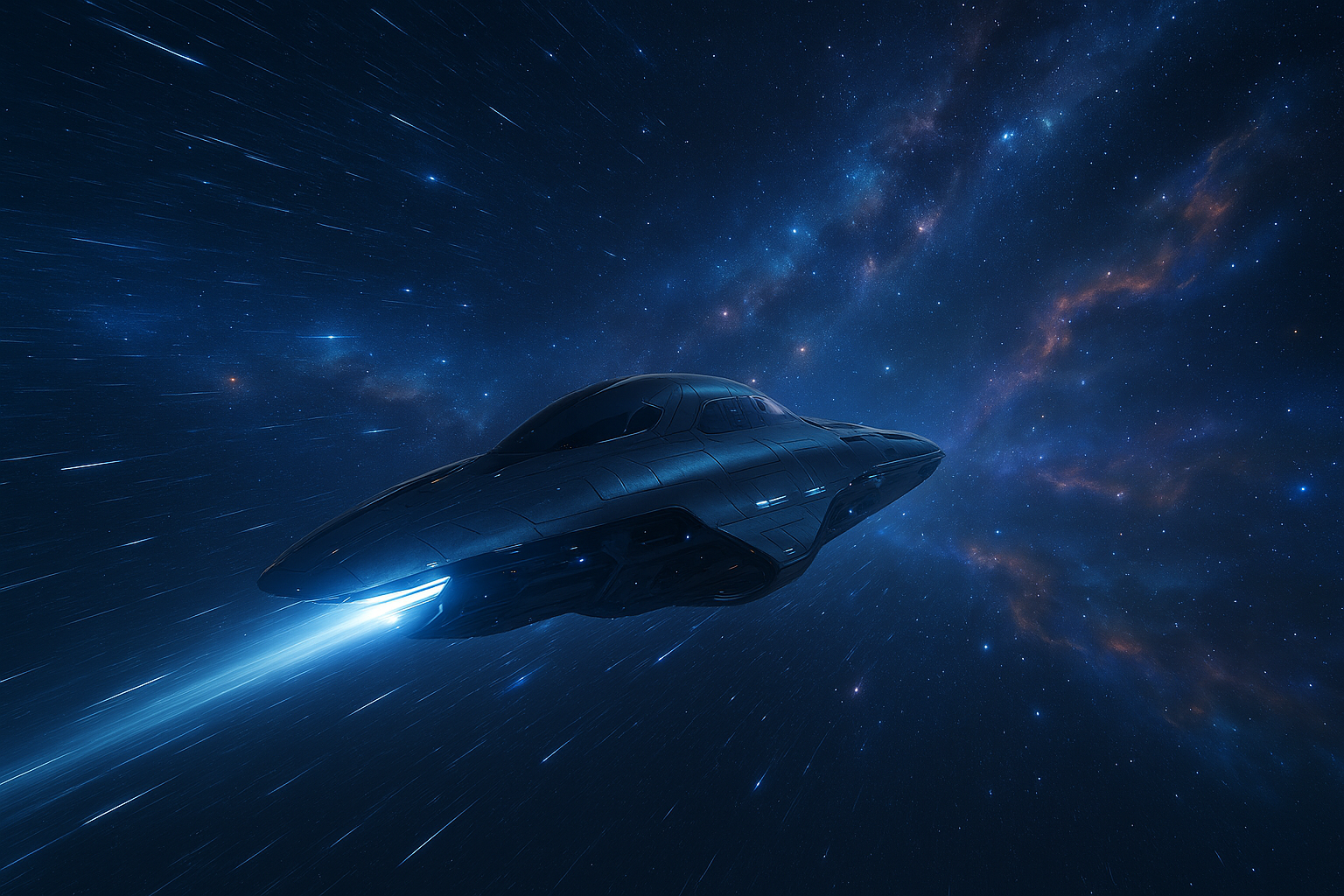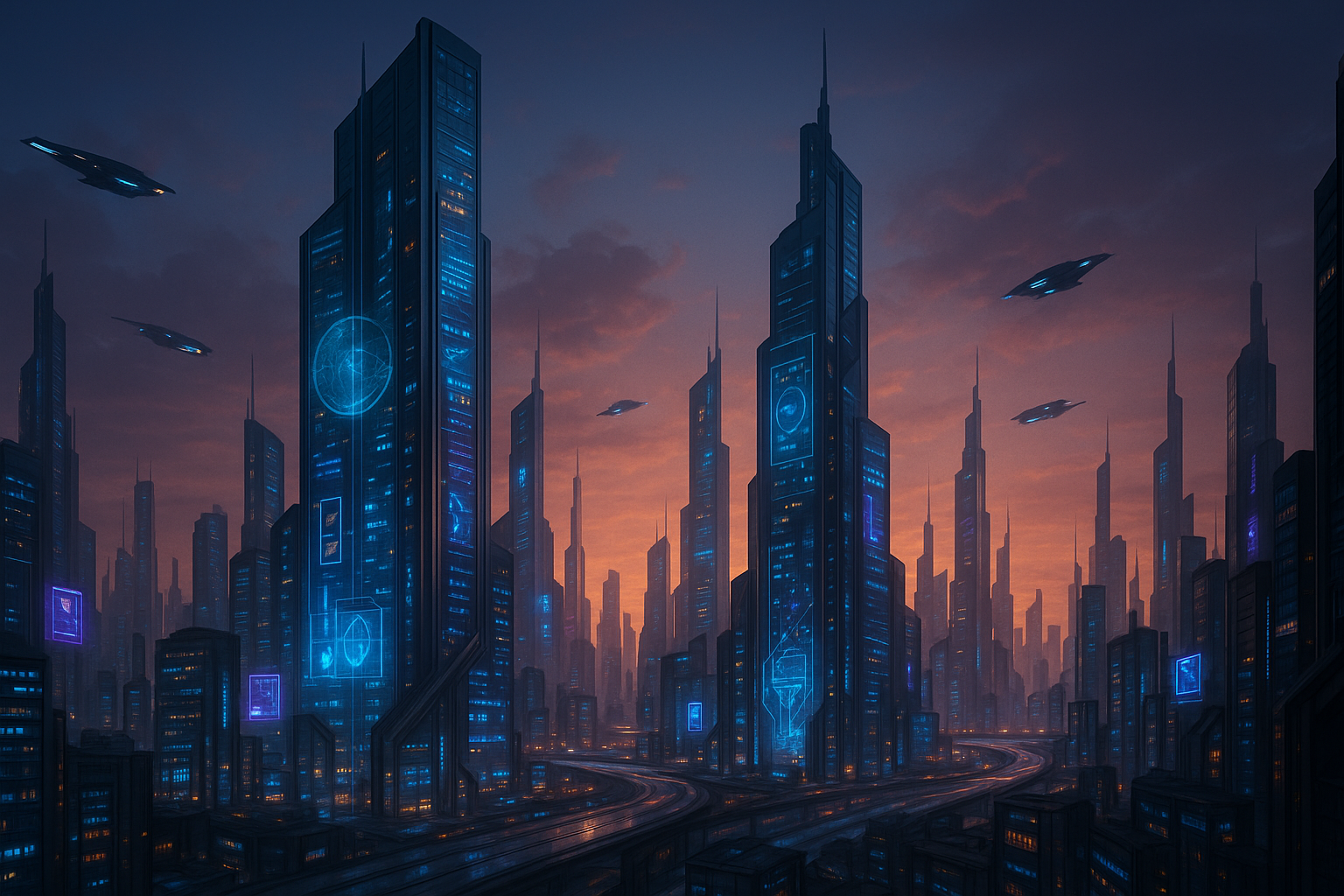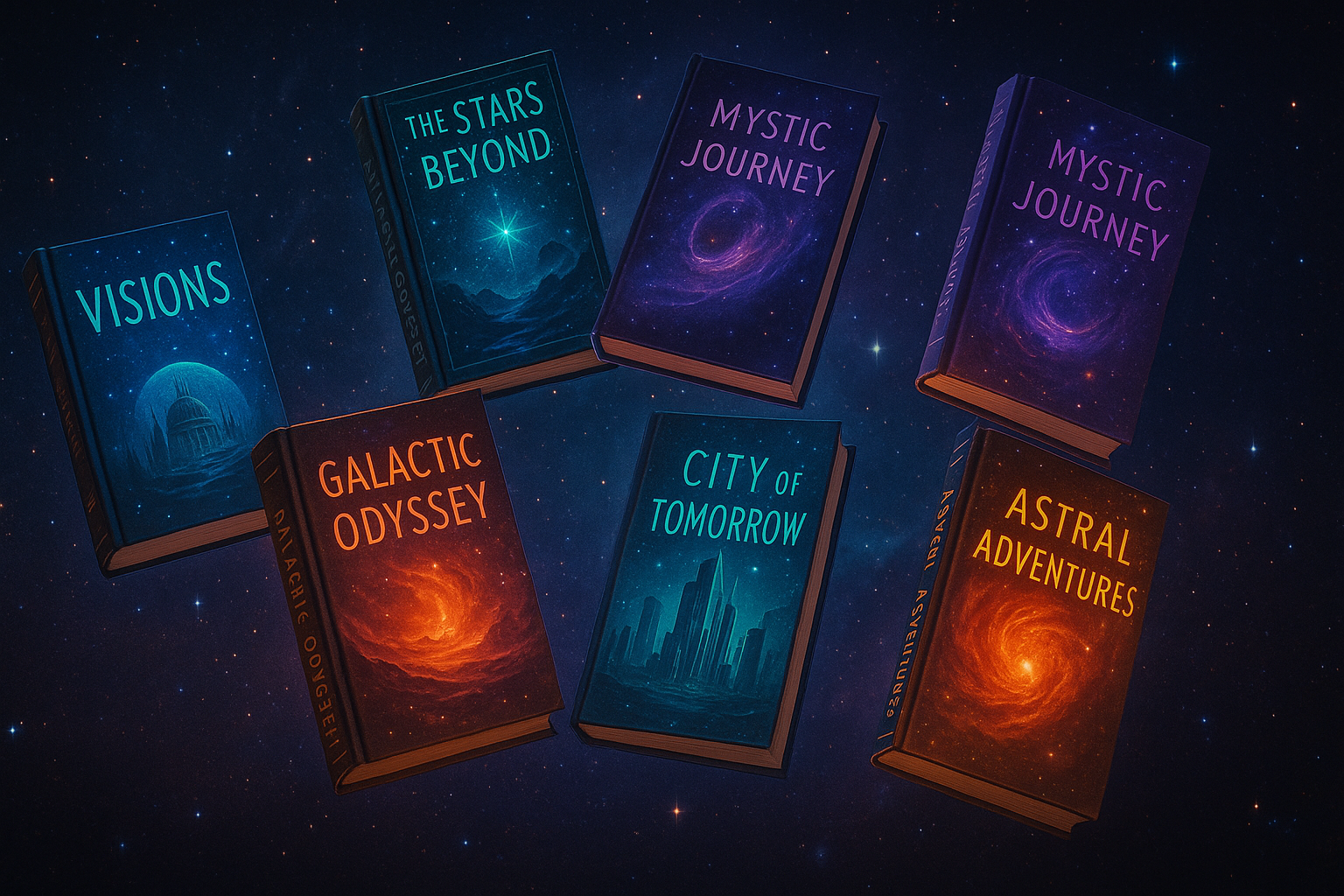
The dream of reaching the stars remains one of science fiction's most enduring themes.
The nearest star to Earth, Proxima Centauri, is 4.24 light-years away. At the speed of our fastest spacecraft, it would take over 70,000 years to reach it. This single fact poses the central challenge of interstellar travel—and the creative challenge of science fiction writers who want humanity to explore the galaxy.
How do you tell stories about interstellar civilizations when the physics of our universe seems designed to keep us trapped in our cosmic neighborhood? Science fiction has developed a rich arsenal of solutions, from the scientifically plausible to the delightfully speculative. Let's explore how authors bridge the impossible gulf between stars.
The Light Speed Barrier: Einstein's Ultimate Speed Limit
Einstein's theory of special relativity tells us that nothing with mass can reach the speed of light. As objects approach light speed, they require exponentially more energy to accelerate further. At light speed, they would need infinite energy—making it a hard physical limit, not just an engineering challenge.
The Scale of the Problem
To Proxima Centauri (4.24 light-years):
- At Voyager 1's speed (38,000 mph): ~73,000 years
- At 10% light speed: ~42 years
- At light speed: 4.24 years
Across the Milky Way (100,000 light-years):
- At light speed: 100,000 years
- At any sub-light speed: Longer than human civilization has existed
This is the fundamental problem science fiction must solve: the universe is incomprehensibly vast, and conventional physics says we're stuck going very, very slowly.
Five Approaches to Interstellar Travel in Science Fiction
1. Generation Ships: Embracing the Journey
Rather than trying to beat physics, generation ship stories accept the reality of slow interstellar travel. Massive spacecraft carry entire communities on voyages lasting centuries or millennia. The people who arrive aren't the ones who left—they're distant descendants.
Scientific Plausibility: ★★★★★
This is actually doable with current or near-future technology. The challenges are engineering (building something that lasts centuries) and social (maintaining a stable society in a closed ecosystem), not physics.
Narrative Opportunities:
- Society evolving in isolation over generations
- Forgetting or mythologizing Earth and the mission purpose
- Social control and governance in closed systems
- What happens when you arrive and find the destination colonized by people who left later with faster ships
Example: In Arthur C. Clarke's Rendezvous with Rama, humanity has learned to think in terms of centuries-long projects, while Robert Heinlein's Orphans of the Sky explores a generation ship where inhabitants have forgotten they're on a ship.
2. Cryosleep: Skipping the Wait
Freeze the crew and wake them up when you arrive. The trip still takes centuries, but the travelers experience only the departure and arrival. This preserves the original crew while making long voyages narratively manageable.
Scientific Plausibility: ★★★☆☆
We can freeze and revive simple organisms, but freezing and thawing humans without damage remains far beyond current capability. Ice crystals destroy cells, and we don't know how to prevent this at the scale of entire humans. Still, it's not impossible—just difficult.
Narrative Opportunities:
- Time displacement—arriving in a future where everything has changed
- Malfunctions causing some to wake early or not at all
- Psychological effects of losing decades or centuries
- The crew as time travelers, strangers in the future they helped create
Example: The Alien franchise and Interstellar use cryosleep to bridge vast distances while keeping characters contemporary to each other across centuries.
3. FTL Drives: Breaking the Rules
Just go faster than light. Different franchises use different terminology—hyperspace, subspace, jump drives, warp drives—but the concept is the same: somehow exceed the light speed limit and turn interstellar travel into something manageable.
Scientific Plausibility: ★★☆☆☆
With current physics: not possible. However, some theoretical frameworks suggest loopholes. The Alcubierre drive, for instance, proposes warping spacetime around a ship rather than moving the ship through space. You're not exceeding light speed locally—you're taking a shortcut through warped space.
The catch? It would require exotic matter with negative energy density, something we've never observed and might not exist. It would also require more energy than exists in the observable universe. Minor details.
Narrative Opportunities:
- Enables galaxy-spanning civilizations and space opera
- FTL travel as a strategic resource or limiting factor
- Different civilizations discovering different FTL methods
- Interesting limitations—FTL only works far from gravity wells, requires special fuel, takes time to "spin up," etc.
Example: Star Trek's warp drive is the most famous example, while The Expanse deliberately avoids FTL to explore the political implications of slow interstellar communication.
4. Wormholes: Shortcuts Through Space
Why travel through space when you can fold space? Wormholes are theoretical tunnels connecting distant points in spacetime. Enter one end, exit light-years away—potentially instantaneously.
Scientific Plausibility: ★★★☆☆
Wormholes are permitted by general relativity—they're not forbidden by physics. However, naturally occurring wormholes would be microscopic and unstable, collapsing before anything could pass through. Keeping one open would require exotic matter (that pesky negative energy again).
The most realistic wormhole scenario: find natural wormholes created in the early universe or by advanced aliens, rather than building your own.
Narrative Opportunities:
- Network of gates connecting distant systems
- Controlling wormholes means controlling interstellar travel
- Discovery of ancient wormhole networks
- Time travel complications—wormholes can theoretically connect times as well as places
Example: Stargate and Interstellar use wormholes as interstellar shortcuts, while The Expanse's ring gates create a galaxy-wide network.
5. Digital Travel: Sending the Pattern, Not the Matter
A radical solution: don't move humans through space. Upload human consciousness to digital form, transmit the data at light speed, and reconstruct the person at the destination. Or beam construction instructions for self-replicating machines that build colonies autonomously.
Scientific Plausibility: ★★☆☆☆
The limiting factors are consciousness upload (can we digitize a mind?) and the philosophical questions (is the reconstruction the same person or a copy?). But information can travel at light speed, making this faster than any physical travel method except FTL or wormholes.
Narrative Opportunities:
- Identity questions—are you still "you" after being deconstructed and reconstructed?
- What happens when transmission errors corrupt the data?
- Multiple copies of the same person at different locations
- Colonization without carrying resources—just send the blueprints
Example: Charles Stross's Accelerando explores uploaded minds colonizing the solar system, while Star Trek's transporters raise similar philosophical questions.
The Narrative Problem of FTL: Communication and Empire
Interstellar travel methods profoundly shape the stories you can tell. The most interesting constraint: communication can't be faster than travel.
In a universe without FTL, even light-speed communication takes years. This creates fascinating political scenarios:
The Slow Empire
Imagine an interstellar empire where:
- Orders from the central government take decades to arrive
- Local governors have near-absolute authority by necessity
- By the time you hear about a crisis, it's ancient history
- Wars might be won or lost before anyone knows they started
- Each system evolves independently, gradually diverging culturally
This mirrors how ancient empires worked when communication traveled at the speed of horses. Rome couldn't micromanage Britain—they had to trust local governors. An interstellar Rome would face these problems multiplied a million-fold.
The FTL Empire
With FTL, you can tell different stories:
- Centralized governments can maintain control across light-years
- Real-time (or near-real-time) communication enables galactic politics
- Trade and cultural exchange happen on human timescales
- Military forces can respond to threats across the galaxy
But even FTL has constraints that make for interesting stories. If FTL takes weeks or months, you still have communication lag. If it requires rare resources or special infrastructure, controlling FTL means controlling civilization.
Choosing Your Interstellar Travel Method: A Guide for Writers
The interstellar travel method you choose fundamentally shapes your story. Here's how to decide:
Choose Generation Ships If:
- You want to explore social evolution
- Hard science realism is important
- You're interested in closed societies
- The journey itself is the story
Choose Cryosleep If:
- You want time displacement drama
- The destination matters more than the journey
- You want realistic limitations without generation-long voyages
- Character relationships span centuries
Choose FTL Drives If:
- You want galaxy-spanning adventures
- Space opera and grand civilizations appeal
- Characters should feel contemporary across star systems
- Travel is a means, not the focus
Choose Wormholes If:
- You want strategically important choke points
- Gate networks and infrastructure matter
- You want instant travel with limitations
- Discovery and exploration are themes
The Human Element: What Really Matters
The physics of interstellar travel is fascinating, but what makes these stories resonate is how they explore human nature:
"The real challenge of interstellar travel isn't physics—it's whether humans can maintain their humanity across the vast gulfs of space and time."
- Isolation and connection: How do we maintain community when separated by light-years?
- Purpose and meaning: What drives people to leave everything behind for stars they'll never reach?
- Identity and change: Are we still human after centuries in space or generations of adaptation?
- Home and belonging: What does "home" mean to people born between the stars?
The Journey Beyond
Interstellar travel represents one of humanity's most ambitious dreams—and science fiction's most enduring challenges. Whether authors choose the hard realism of generation ships, the speculative leap of FTL drives, or something entirely new, they're all grappling with the same fundamental question: how do we bridge the impossible distances between stars?
The answer matters less than the journey. The best interstellar travel stories use their chosen method to explore what it means to be human in an infinite cosmos—to reach for distant stars knowing we might never arrive, but reaching anyway because that's what humans do. In the end, interstellar travel stories aren't really about physics at all. They're about us.


